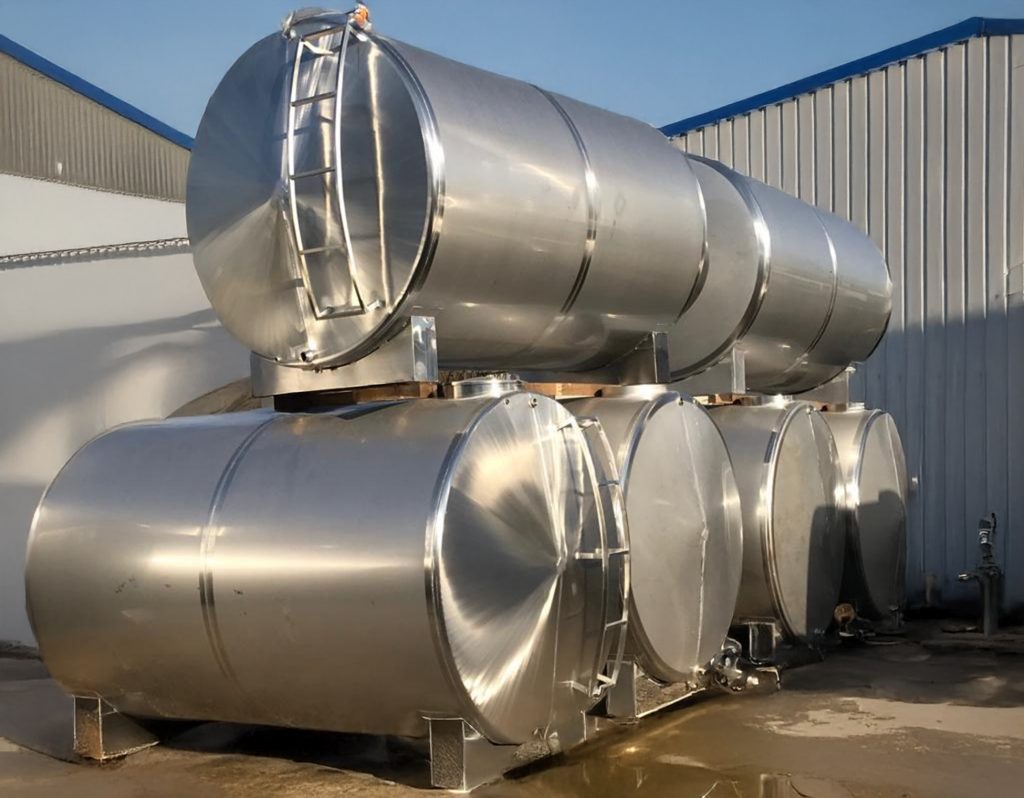Stainless Steel Tank Prices, When it comes to industrial storage and processing solutions, stainless steel tanks stand out as one of the most reliable options. But if you’re planning to invest in one, the first question that comes to mind is: How much does a stainless steel tank cost? The answer isn’t as simple as quoting a flat number. Stainless Steel Tank Prices vary greatly depending on a mix of technical, material, and market-related factors.
In this article, we’ll break down how stainless steel tank prices are determined, what you should consider before buying, and how you can get the best value for your money.
What Is a Stainless Steel Tank?
Definition and Purpose
A stainless steel tank is a robust container designed to store or process liquids, solids, or gases. These tanks are typically made from high-grade stainless steel, which is resistant to corrosion, rust, and contamination.
Common Uses Across Industries
Stainless steel tanks are widely used in industries such as food processing, dairy, beverages, pharmaceuticals, chemicals, cosmetics, and even water treatment. Each sector has unique requirements, but all rely on stainless steel tanks for their durability and hygiene.
Why Stainless Steel Tanks Are Preferred
Durability
Stainless steel offers superior strength and resistance against corrosion, making these tanks last for decades with proper maintenance.
Hygiene and Safety
Unlike other materials, stainless steel doesn’t react with stored products, ensuring cleanliness and preventing contamination—crucial for food and pharmaceutical sectors.
Versatility in Applications
Whether it’s milk, wine, chemicals, or water, stainless steel tanks can handle a wide variety of contents without compromising quality.
Factors That Affect Stainless Steel Tank Prices
Raw Material Costs
The biggest price driver is the cost of stainless steel itself, which fluctuates with global markets.
Tank Size and Capacity
Larger tanks naturally cost more due to higher material usage and more complex manufacturing.
Design Complexity
Standard cylindrical tanks are cheaper compared to tanks with complex shapes, multiple compartments, or integrated systems.
Thickness of Steel Used
The thicker the steel, the stronger and more expensive the tank. Industries storing corrosive or pressurized materials usually require thicker steel.
Additional Features
Features like insulation, agitators, pressure control valves, or heating jackets add significant costs.
Manufacturing Standards and Certifications
Tanks that comply with international standards (such as ASME, CE, or FDA requirements) are pricier but guarantee higher safety and reliability.
Transportation and Installation Costs
Because tanks are bulky, delivery and setup can sometimes cost almost as much as the tank itself.
Different Types of Stainless Steel Tanks and Their Price Ranges
Storage Tanks
Used for holding liquids, often the most affordable option.
Mixing Tanks
Include agitators or mixers, making them costlier than simple storage tanks.
Process Tanks
Equipped with heating, cooling, or pressurization systems; prices increase with functionality.
Pressure Vessels
Specially designed to withstand high pressures—significantly more expensive.
Customized Tanks
Tailored to specific industry needs, with unique dimensions or integrated technology, often carrying premium price tags.
How Market Conditions Influence Prices
Global Steel Prices
Fluctuations in raw material prices directly affect tank costs.
Supply and Demand Balance
High demand in industries like food processing or pharmaceuticals can push prices up.
Economic Fluctuations
Global recessions or trade restrictions can make tanks either cheaper or more expensive depending on supply chains.
What Should Be Considered Before Buying a Stainless Steel Tank?
Intended Use
The first step is to clarify what you’ll be storing or processing, as this determines design requirements.
Industry Standards
Make sure the tank complies with safety and hygiene regulations relevant to your industry.
Vendor Reputation
A reliable manufacturer ensures long-term performance and quality assurance.
Warranty and After-Sales Services
Tanks are a long-term investment—warranty coverage and technical support can save huge costs down the road.
How to Save Money Without Sacrificing Quality
Choosing Standard Models
Opt for ready-made designs instead of fully customized models to cut costs.
Bulk Purchasing
Ordering multiple tanks often reduces per-unit prices.
Comparing Multiple Suppliers
Never settle for the first quote—check different manufacturers for better deals.
Considering Long-Term ROI
While stainless steel tanks are more expensive upfront, they last much longer than plastic or mild steel alternatives, providing better long-term value.
Common Mistakes Buyers Make
Focusing Only on Initial Price
A cheaper tank might end up costing more in repairs, downtime, or replacements.
Ignoring Certifications
Lack of compliance with standards can lead to legal and safety issues.
Overlooking Maintenance Costs
Even stainless steel requires cleaning, inspection, and occasional servicing.
Conclusion
Stainless steel tanks are a long-term investment that can significantly impact efficiency, safety, and product quality in various industries. Their Stainless Steel Tank Prices are shaped by multiple factors, including raw material costs, design complexity, and additional features. Before buying, it’s crucial to evaluate your needs, consider long-term ROI, and choose a reputable supplier.
While the initial investment may seem high, the durability, hygiene, and versatility of stainless steel tanks make them well worth the cost.
FAQs
1. Are stainless steel tanks worth the investment?
Yes. While they cost more upfront, their long lifespan and reliability make them cost-effective in the long run.
2. Which industries use stainless steel tanks the most?
Food, beverage, dairy, pharmaceuticals, chemicals, and cosmetics are the biggest users.
3. How long does a stainless steel tank last?
With proper care, they can last 20–30 years or more.
4. Can stainless steel tanks be customized?
Absolutely. Manufacturers can build tanks according to specific dimensions, features, and industry needs.
5. What is the price difference between stainless steel and plastic tanks?
Plastic tanks are cheaper upfront, but stainless steel tanks offer better durability, hygiene, and overall lifetime value.
Click here for detailed information about water tanks!


